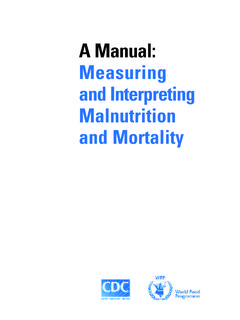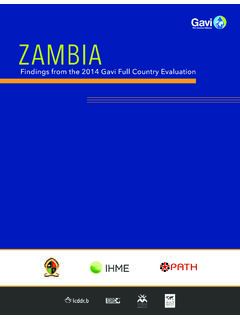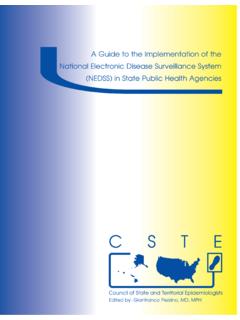Transcription of Epi Data Brief - New York City
1 Epi data Brief New york city Department of Health and Mental Hygiene September 2013, No. 33. Unintentional Drug Poisoning (Overdose) Deaths in New york city , 2000-2012. Approximately 9,000 New york city residents died of an unintentional drug poisoning (overdose) during the years 2000-2012, an average of 700 overdose deaths per year. The rate of unintentional overdose deaths was highest in 2006 ( per 100,000 New Yorkers) and decreased on average by 22% per year from 2006 through 2010. The rate of unintentional drug poisoning deaths increased by 25% between 2010 and 2012, from to per 100,000 New Yorkers (541 deaths vs. 677 deaths). In 2012, nearly all (97%). unintentional drug Unintentional drug poisoning deaths, New york city , 2000-2012. poisoning deaths involved 800 more than one substance, Age-Adjusted Rate per 100,000. including alcohol, licit and 700 Number of deaths illicit drugs. 600 The drugs most commonly 500. identified were heroin, 400. cocaine, benzodiazepines, 300. prescription opioid 200.
2 Analgesics, and methadone. 100 638 792 723 769 722 796 838 695 618 593 541 630 677. The rate of drug poisoning 0 deaths involving opioid analgesics increased by Number of deaths Age-adjusted rate per 100,000. 267% between 2000 and 2011, from to per Source: NYC Office of the Chief Medical Examiner & NYC DOHMH Bureau of Vital Statistics 100,000 New Yorkers (59. deaths vs. 220 deaths). From 2011 to 2012, the Unintentional drug poisoning deaths by drug type involved (not rate decreased 12% to mutually exclusive), New york city , 2000-2012. Heroin per 100,000. Cocaine From 2010 to 2012, Methadone Age Adjusted Rate per 100,000. heroin-involved deaths Benzodiazepines increased 71% from to Opioid Analgesics per 100,000 and in 2012 had a higher rate than overdose deaths involving any other substance. The rate of benzodiazepine- involved deaths increased by 160% between 2000 and 2012, from to per Source: NYC Office of the Chief Medical Examiner & NYC DOHMH Bureau of Vital Statistics 100,000 New Yorkers.
3 Benzodiazepines were found in 58% of deaths involving opioid analgesics, 41% of deaths involving heroin and 33% of deaths involving cocaine in 2012. Epi data Brief , No. 33 Page 2. Definitions: Unintentional drug poisoning deaths involving opioid Unintentional drug poisoning analgesics deaths: Derived from death Prescription opioid analgesics were involved in 28% of overdose deaths in certificates and include deaths from 2012. Between 2011 and 2012 the rate of drug poisoning deaths involving both illicit drugs and licit drugs taken for non-medical reasons. opioid analgesics decreased across all boroughs. Staten Island continued to Unintentional drug poisoning death have the highest rate ( per 100,000). excludes poisonings where the manner of death was intentional Unintentional drug poisoning deaths involving opioid analgesics, (suicide), undetermined, or New york city , 2000-2012. homicide. Toxicology findings were abstracted from medical examiner 250 Number of deaths files. Drugs are not mutually exclusive.
4 Age-adjusted rate per 100,000 Age-adjusted rate per 100,000. 200 Opioids: Cover the entire family of opiates and opioids. Opiates are Number of deaths narcotic analgesics derived from 150. natural opium, such as morphine, heroin, or codeine. Opioids are synthetic drugs, such as 100. methadone, and possess narcotic properties similar to opiates, but 50. are not derived from opium. Opioid analgesics, also known as 59 66 78 81 93 130 152 131 137 151 173 220 190. prescription pain relievers, such as 0 oxycodone (Percocet ) and hydrocodone (Vicodin ). High dose: Defined as any opioid Source: NYC Office of the Chief Medical Examiner & NYC DOHMH Bureau of Vital Statistics analgesic prescription with a calculated morphine equivalent dose (MED) greater than 100. Unintentional drug poisoning deaths involving heroin Among patients receiving opioid Heroin was involved in 52% of all overdose deaths in 2012. prescriptions, overdose rates increase with increasing doses of The rate of drug poisoning deaths involving heroin increased from per prescribed opioids.
5 100,000 New Yorkers in 2011 (284 deaths) to per 100,000 New Yorkers Population Rates: Calculated using in 2012 (352 deaths). NYC DOHMH population estimates, The rate of drug poisoning deaths involving heroin was highest in 2003 ( modified from US Census Bureau intercensal population estimates per 100,000 -- 438 deaths). 2000-2012, updated July 22, 2013. These rates will differ from Unintentional drug poisoning deaths involving heroin, New york previously reported rates based on city , 2000-2012. Census counts or previous versions Number of deaths of population estimates. Rates are 500 Age-adjusted rate per 100,000. age-adjusted to Census 2000, Age-adjusted rate per 100,000. 450 except those for specific age 400 groups. Neighborhood poverty: The United 350 Number of deaths Hospital Fund (UHF) classifies New 300 york city into 42 neighborhoods, 250 comprised of contiguous zip codes. Neighborhood poverty was defined 200 by the percent of residents in each 150. UHF neighborhood with incomes 100.
6 Below 100% of the federal poverty 50 level (Census 2000), separated into 373 416 400 438 358 379 388 301 317 288 209 284 352. four groups: low (<10%), medium 0 (10%-<20%), high (20%-<30%) and very high (>30%) neighborhood poverty. Source: NYC Office of the Chief Medical Examiner & NYC DOHMH Bureau of Vital Statistics New york city Department of Health and Mental Hygiene September 2013. Epi data Brief , No. 33 Page 3. Demographics of unintentional drug poisoning deaths involving heroin In 2012, Staten Island residents had the highest Unintentional drug poisoning deaths involving heroin by borough of residence, New york city , 2000-2012. rate ( per 100,000) of Bronx drug poisoning deaths Staten Island Age-adjusted rate per 100,000. involving heroin, followed Manhattan by the Bronx ( per Brooklyn 100,000). Queens The rate in Staten Island was more than four times that of Queens ( per 100,000) and more than double the rate in Manhattan ( per 100,000) and Brooklyn ( per 100,000). Source: NYC Office of the Chief Medical Examiner & NYC DOHMH Bureau of Vital Statistics From 2000 through 2012, New Yorkers Unintentional drug poisoning deaths involving heroin aged 35 to 54 had the highest rate of by age, New york city , 2000-2012.
7 Drug poisoning deaths involving 35-54. heroin. Age-adjusted rate per 100,000. 15-34. In 2012, the rate among New Yorkers 55-84. aged 35 to 54 ( per 100,000) was more than two times higher than the rate for those under 35 years of age ( per 100,000), and three times the rate of New Yorkers 55 and older ( per 100,000). Between 2010 and 2012, the rate increased 90% among New Yorkers under 35 years of age ( to per Source: NYC Office of the Chief Medical Examiner & NYC DOHMH Bureau of Vital Statistics 100,000 -- 55 deaths and 105 deaths, respectively). Residents of highest-poverty Unintentional drug poisoning deaths involving heroin by neighborhoods had a higher rate race/ethnicity, New york city , 2000-2012. of heroin overdose deaths ( per White 100,000) than residents of all Age-adjusted rate per 100,000. Hispanic other neighborhoods in 2012. Black From 2010 to 2012, residents of lowest-poverty neighborhoods had the largest increase in rates (283%). The rate of drug poisoning deaths involving heroin among white New Yorkers ( per 100,000) in 2012 was higher than Hispanic New 2000 2001 2002 2003 2004 2005 2006 2007 2008 2009 2010 2011 2012.
8 Yorkers ( per 100,000), and black New Yorkers ( per 100,000). Source: NYC Office of the Chief Medical Examiner & NYC DOHMH Bureau of Vital Statistics New york city Department of Health and Mental Hygiene September 2013. Epi data Brief , No. 33 Page 4. Comment: For the second year in a row, the rate of overdose deaths increased in New york city , after four successive years of decreases. Increases in heroin-related overdose deaths beginning in 2011 preceded decreases in opioid analgesic-related overdose deaths in 2012. Similarly the increase in heroin deaths in New york city after 2010 was not preceded by a decrease in the prescribing of opioid analgesics, suggesting that the heroin overdose increase occurred independent of any changes in prescription opioid availability. DOHMH prevention and treatment activities To prevent overdose and reduce adverse health consequences of heroin and prescription opioid use: 1. Public awareness. The Department of Health and Mental Hygiene (DOHMH) has conducted public awareness campaigns through television about overdose risk from prescription opioids.
9 2. Overdose prevention. DOHMH funds training of responders in overdose treatment and distributes naloxone, a medicine that reverses the effects of prescription opioids and heroin. 3. Effective treatment for opioid dependence. DOHMH funds and promotes quality improvement among substance use disorder treatment programs. DOHMH also conducts training, disseminates practice guidelines, and provides technical assistance to promote effective practice, particularly with buprenorphine, an effective medication for opioid dependence. 4. Policy development and program initiatives. DOHMH uses data to inform policy-makers and initiate new programs such as: advocating for relabeling of opioids to discourage their use for treatment of chronic non-cancer pain, making naloxone an over-the-counter medication, and urging hospital adoption of guidelines for judicious opioid prescribing in emergency departments. Authored by: Denise Paone, Ellenie Tuazon, Michelle Nolan, Daniella Bradley O'Brien data Source BVS/OCME: Mortality data were collected through an in-depth review of data and charts from the Health Department's Bureau of Vital Statistics and the Office of the Chief Medical Examiner for 2000-2012.
10 Methadone is reported separately and not included in opioid analgesic analyses. MORE New york city Health data and Publications For complete tables of data presented in this Brief , visit For more information on drug use, check out the following Health Department resources: Unintentional Opioid Analgesic Poisoning (Overdose) Deaths in New york city , 2011. Opioid Analgesics in New york city : Prescriber Practices Drugs in New york city : Misuse, Morbidity and Mortality Update Patterns of Opioid Analgesic Prescriptions for New york city Residents city Health Information: Preventing Misuse of Prescription Opioid Drugs (includes prescribing guidelines). ED Guidelines Vital Signs: Illicit Drug Use in New york city Visit EpiQuery the Health Department's online, interactive health data system: data & Statistics at New york city Department of Health and Mental Hygiene September 2013.
















